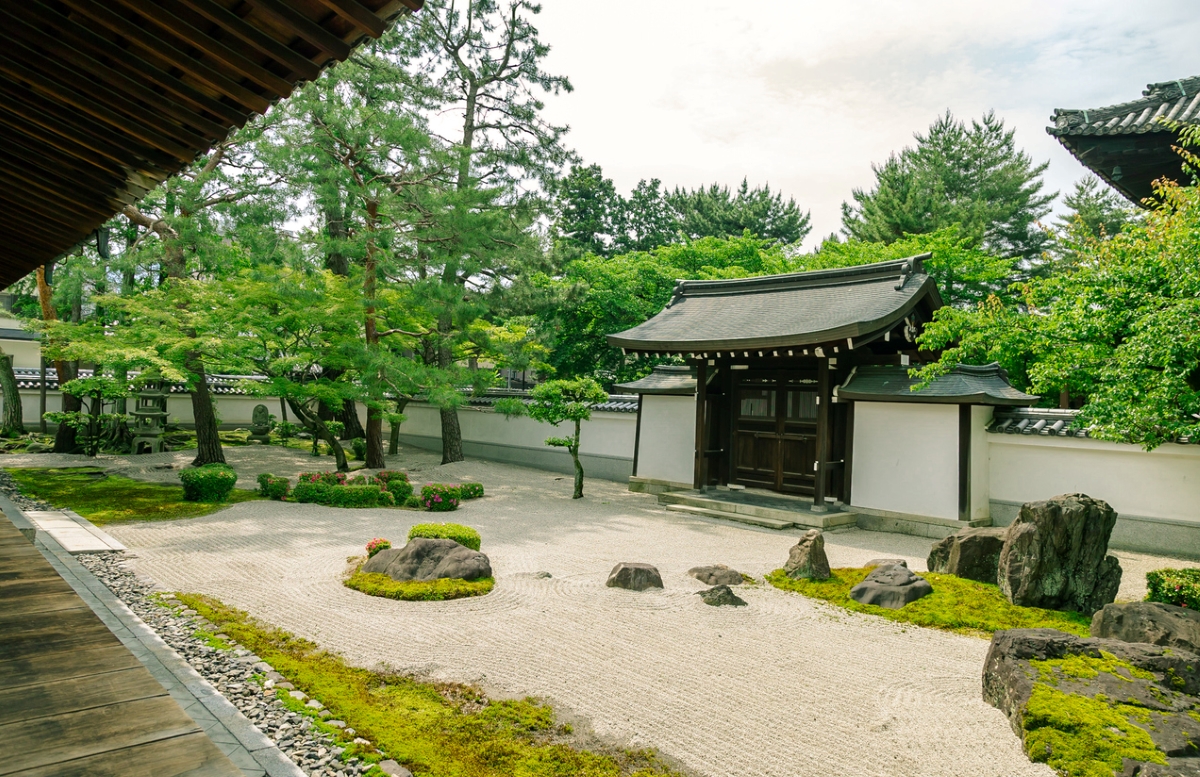

We may earn revenue from the products available on this page and participate in affiliate programs. Learn More ›
We owe a debt of gratitude to the centuries-old culture of Japan. Consider the complementary concepts of wabi-sabi and kintsugi, which have helped Westerners gain an appreciation for the beauty of imperfections. Japan has introduced gourmands across the globe to some delectable edible offerings—sushi and ramen, of course, but also tonkatsu, okonomiyaki, matcha, and onigiri.
Another of Japan’s gifts to people around the globe is Zen Buddhism. We’ll leave the debate over its definition—is it a religion, a philosophy, a practice, a lifestyle, all of the above?—for another time. Today we’re focusing on the Zen aesthetic, which is all about simplicity, beauty, peace, and oneness with nature. Organizational maven Marie Kondo has helped turn our interiors into sacred minimalist spaces; now, Zen-inspired garden design ideas are performing a similar service for our outdoor living areas.
1. Raked Sand
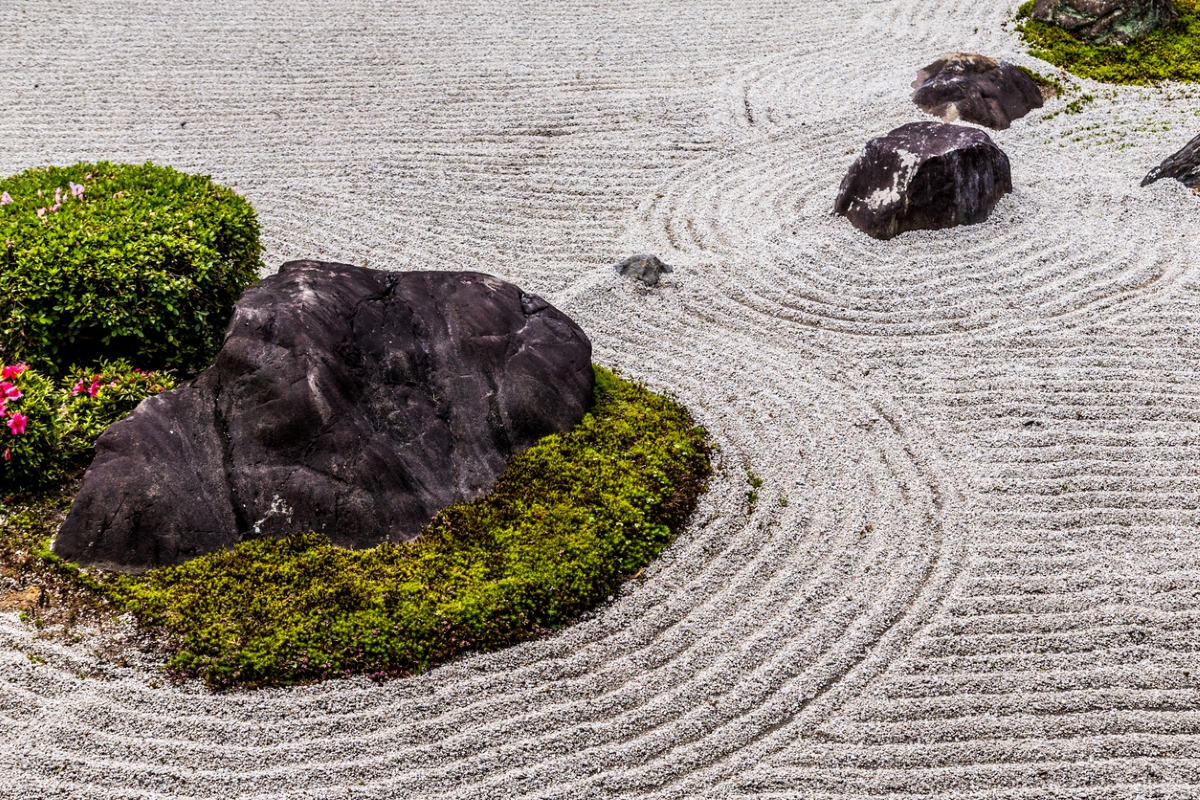
Karenagare, or raked sand, is the popular poster child of Zen gardens. That’s largely because desktop Zen sand gardens—complete with a shallow tray, a quantity of sand, maybe some small stones, and a miniature rake—graced so many corner-office executive desks in the ’90s.
White sand is traditional, but gravel works well, too. It’s a low-fuss landscaping material that makes perfect sense in any xeriscaped space. Incorporating subtle designs into the sand or gravel of a Zen garden can yield surprisingly evocative results. Even the very act of raking them is a moving meditation.
Try raking the sand to create wavelike lines that are both symbolic and suggestive of water and the way it moves. Or go geometrical and rake your sand in straight lines to surround a flower bed or sculpted shrub.
2. Gravel Mountains
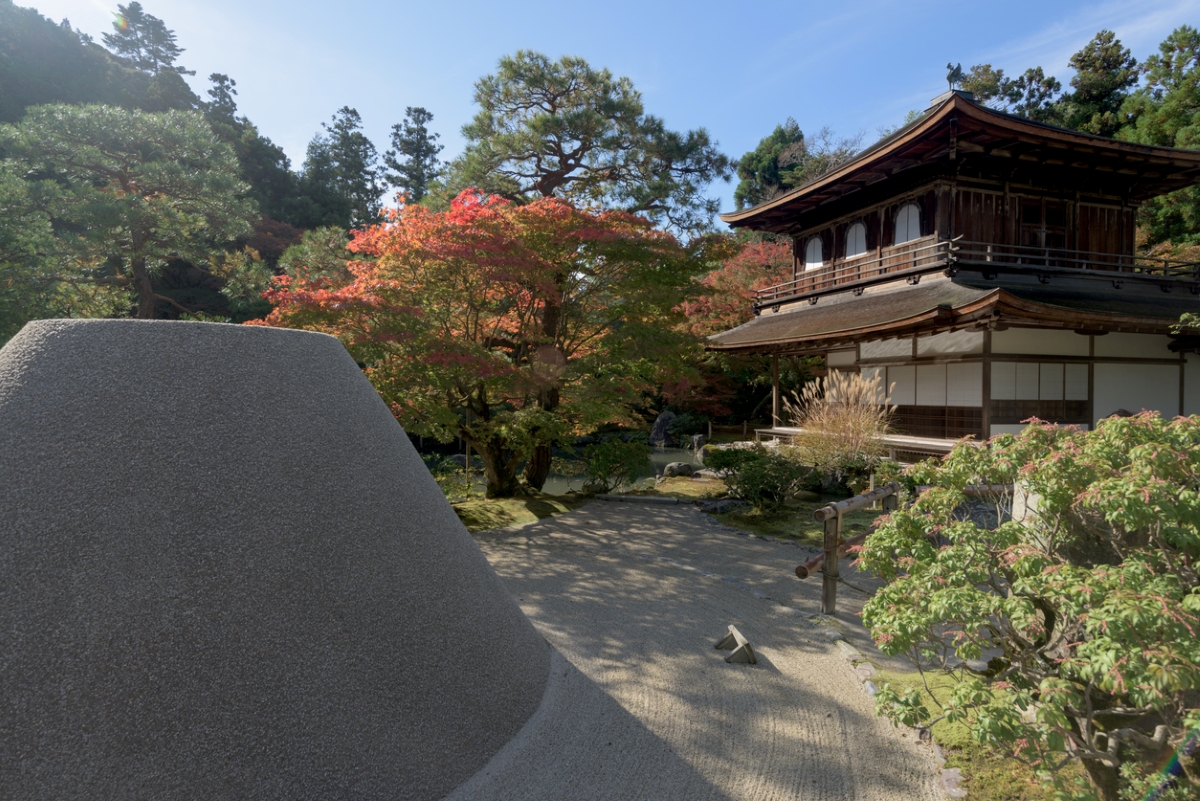
Leave it to the Japanese to find the poetry in a giant pile of sand. At Kyoto’s Silver Palace, a temple and Zen garden that attracts tourists from near and far, there is just such an attraction. This perfect cone of sand stands over 6 feet tall and resembles the reflection of a full moon in a nighttime pond. Hence its name, Kogetsudai, which means “moon-viewing platform.”
Recreate this stunning height at home, with sand, gravel, or tiny pebbles, for an eye-catching addition to your yard (although you may want to build your moon-viewing platform on a slightly smaller scale than the original).
3. Dry Waterfalls
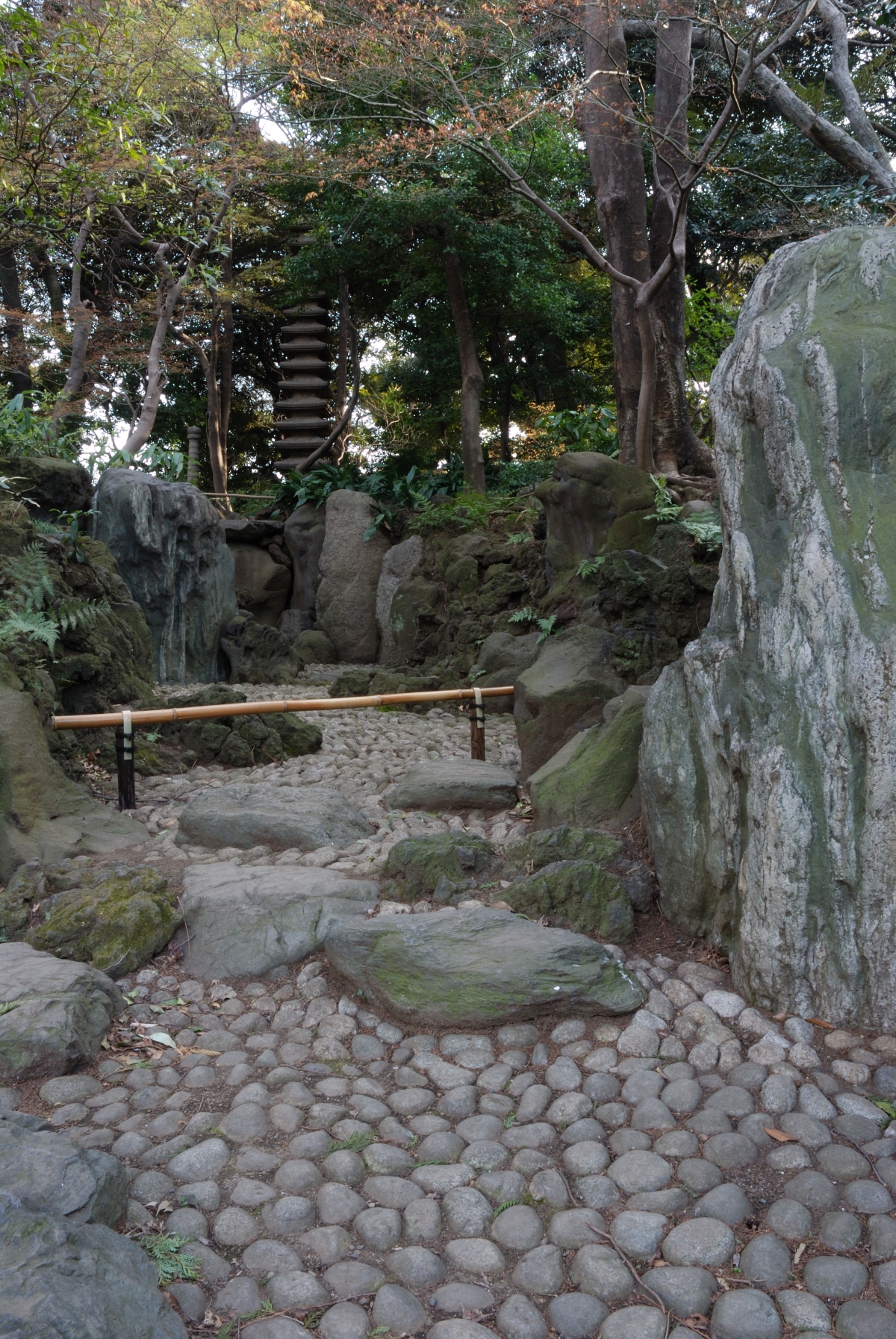
A dry waterfall is a contradiction in terms, but never mind the semantics. A lovely arrangement of stones, gravel, and sand, a karetaki creates the illusion of a stream of flowing water. It’s an especially ideal focal point if your yard boasts a gentle slope, but even if the lawn is level, you can press large rocks into service to create contrasting heights for your “water” to “flow” down.
4. Fish Friends
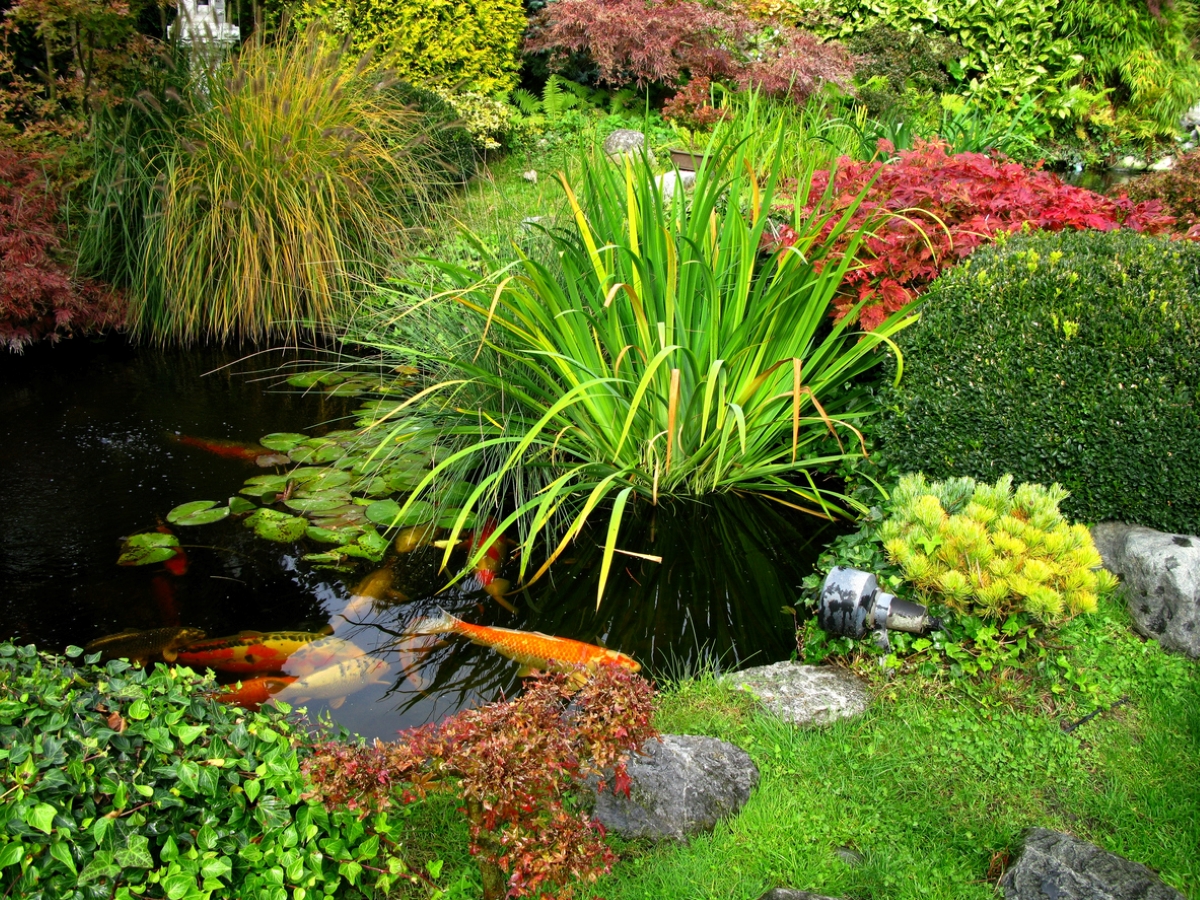
Like goldfish for grown-ups, big, brilliantly hued koi fish are both captivating and relaxing to watch. Unlike their carnival-prize counterparts, however, koi—and the pond they’ll call home—require a fair amount of attention and upkeep. To add these stunning creatures to your Japanese-inspired garden, start by learning how to build a pond in your backyard. Take your time researching the many exquisite varieties of koi and how to care for them. A koi pond is high maintenance, to be sure, but it will be well worth the effort to have such a showstopping centerpiece for your Zen garden.
5. Meticulously Pruned Trees
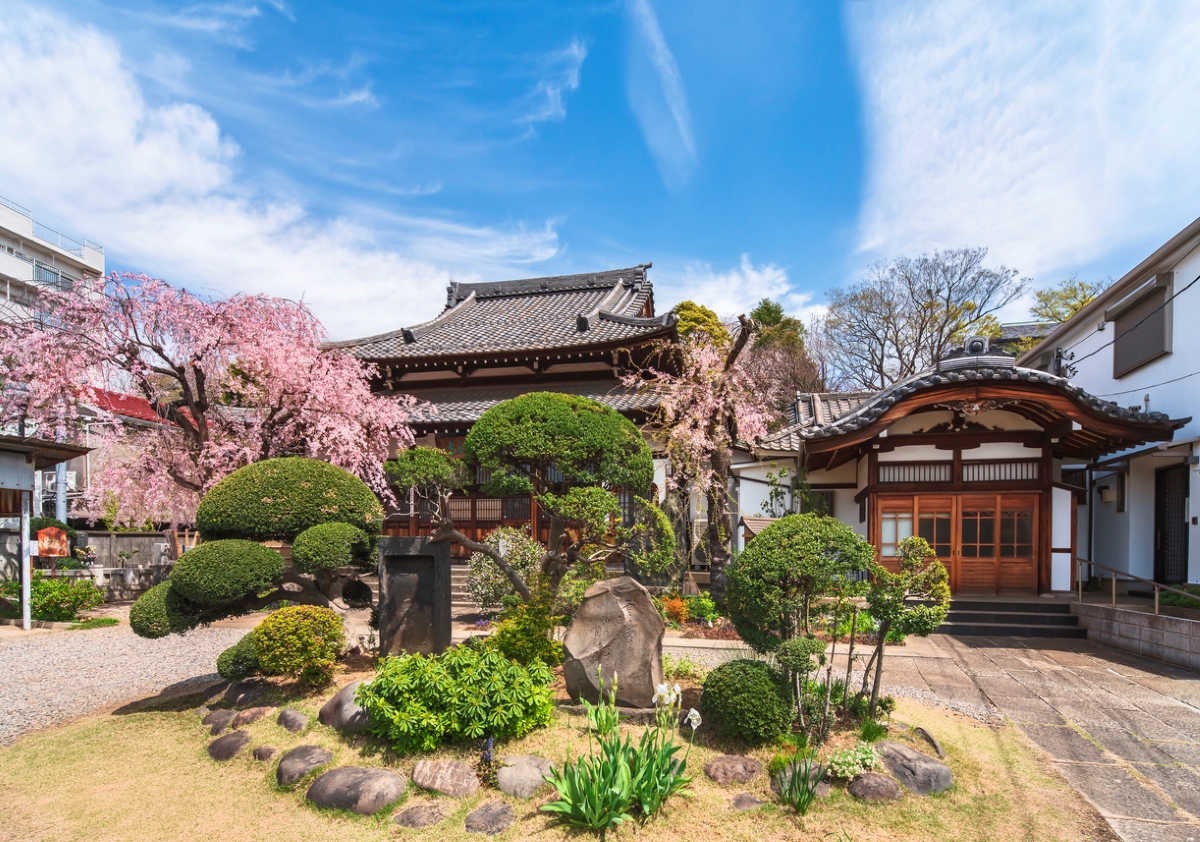
The Zen garden is nowhere near as reliant on actual plants as most Western gardens are. But that doesn’t mean there’s no greenery at all. In fact, meticulously pruned trees and shrubs make an unmistakable statement of symmetry, orderliness, and simplicity. While bonsai by definition are planted in containers to keep them artificially small, even trees that grow directly from the earth can be manipulated to exemplify a certain aesthetic, so fire up those hedge trimmers.
Not to worry if lopping off branches isn’t your thing: Flowering cherry trees are a gorgeous shortcut if you want to invoke classic Japanese springtime vibes. They aren’t difficult to grow, either, though for greatest success you will want to find a cultivar that is native or adapted to your growing area.
6. Mini Bridge

Zen Buddhism leans heavily on metaphors and symbols, and one of the most loved metaphors in its philosophy is that of the bridge. Bridges do much more than provide dry passage across a body of water. They stand for passages of all types: from inner to outer, from man-made to natural, from earthly to spiritual—and, ultimately, from this temporary plane of existence to one that is everlasting.
Some Zen bridges are painted red to symbolize sacred transformation. Others are left unfinished so that they may bloom into beauty—and fulfill the promise of wabi-sabi—as they age.
7. Bamboo Elements
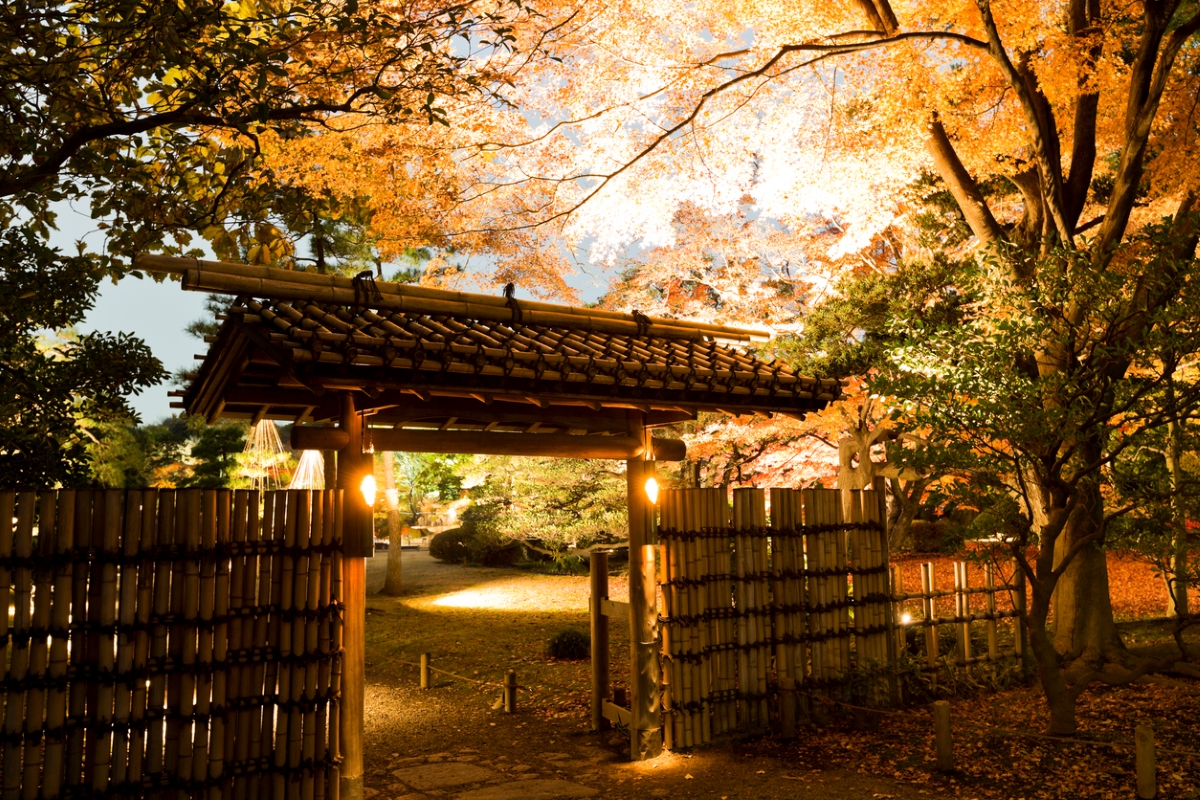
Fast-growing and environmentally friendly bamboo has come a long way, baby. An age-old staple of Asian landscapes, it maintains a sheen of South Seas exoticism for many Americans, thanks to its association with tiki bars and Trader Joe’s. Bamboo is a versatile and durable material that’s used to make everything from flooring to bedding, but if you’re sketching out your Zen garden, you’ll want to stick close to its natural state. That means either planting bamboo (to become a natural fence, if desired) or installing it in the form of a gate, wall, arbor, pergola, or pagoda. If you’re planting it, you’ll want to figure out how to contain it: This grass grows quickly and is invasive.
8. Flowing Fountain
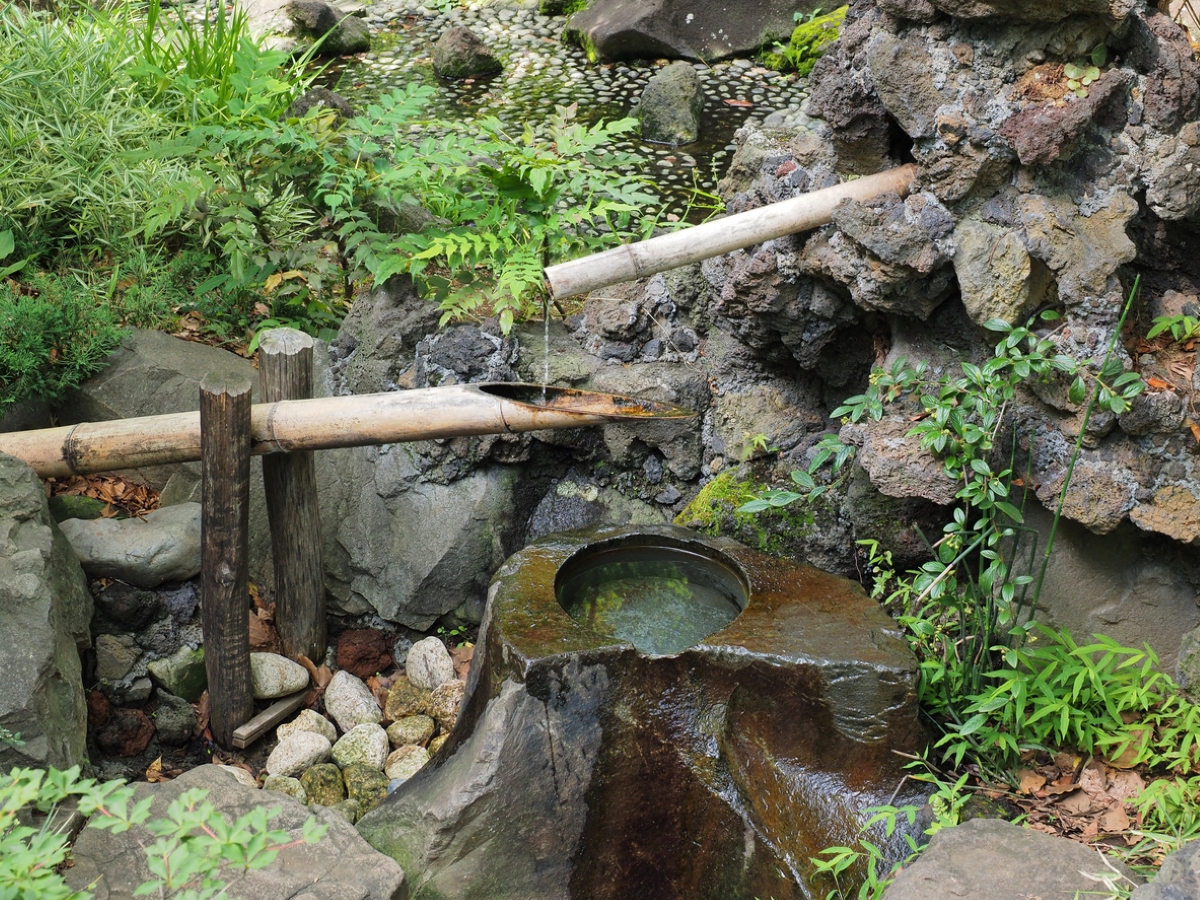
Take a cue from Buddhists, for whom water represents the perpetual flow of life itself, by installing a fountain. One of the most popular designs in Japanese culture is the shishi-odoshi, which you may have seen in the Tarantino film Kill Bill. A bamboo tube balanced on a fulcrum, the shishi-odoshi fills with water from a source above until it tilts at its tipping point, emptying into a pool below. The clacking noise created when the bamboo meets a strategically placed stone is intended to startle wildlife: Though ”shishi-odoshi” literally means “deer frightening,” many humans find the deer scaring fountain mesmerizing and meditative.
Another option? Enable the soothing sounds of H20 by crafting a fountain with what’s on hand. If you’ve got stone planters, copper pipes, pavers, leftover lumber, or even large garden rocks lying around, all you need to DIY your Z-E-N is an inexpensive water pump.
9. Nighttime Lighting
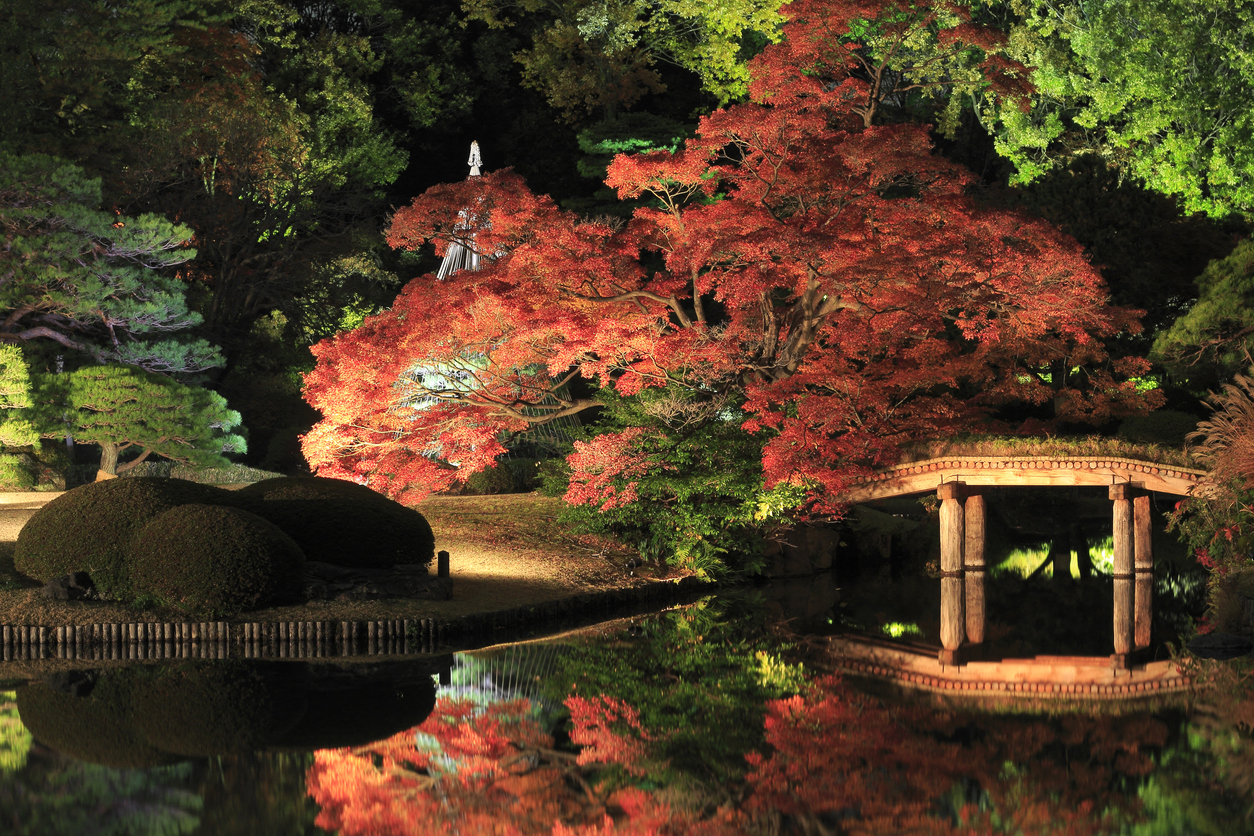
Originally, Zen gardens would be lit only by moonlight, so any artificial light sources you choose to add should stay on the subtle side. Traditional Japanese toro lanterns can be made from stone, wood, or metal; there are hanging, buried, and pedestal-resting types. Nowadays, gardeners can get their Zen on with eco-friendly solar-powered lanterns. Consider using them as luminaries to light a path, or opt for only a few larger lanterns that are wisely positioned to illuminate, but not dominate, the setting.
10. Garden Gate
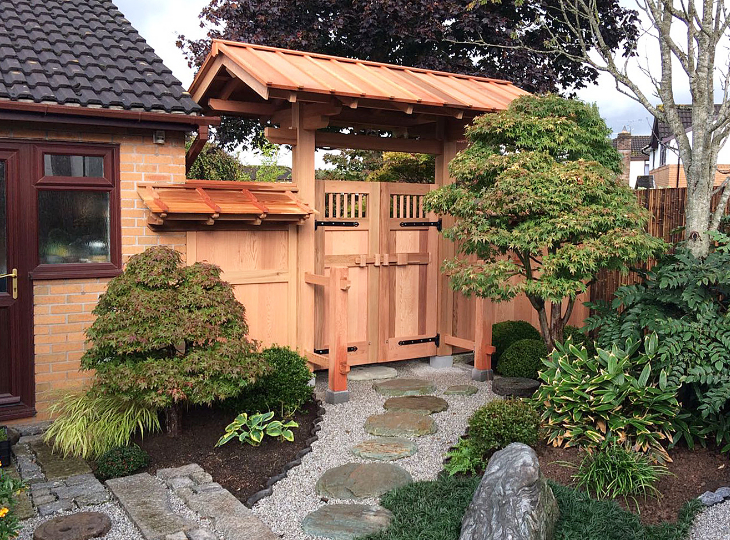
To emphasize the mindfulness of moving deliberately into your tranquil garden environment, consider adding a gate to cordon off your space. Sanmon gates are integral architectural aspects of Buddhist temples, meant to separate the sacred from the profane, the outside world from the temple grounds. Because they are symbolic, sanmon cannot physically prevent entrance or egress the way our backyard fence gates do. Instead, their multiple open entrances represent the transformative power of passing from one environment to another.
A more practical alternative for a backyard Zen garden is a Niwamon, a traditional Japanese roofed gate that’s made of wood (see above). Many Westerners may be more familiar with torii gates, which are simple, streamlined, and often scarlet-colored. Although they are associated with Shinto, rather than Buddhism, you could certainly include one in your Zen garden if you love their look.
11. Japanese Maple Tree
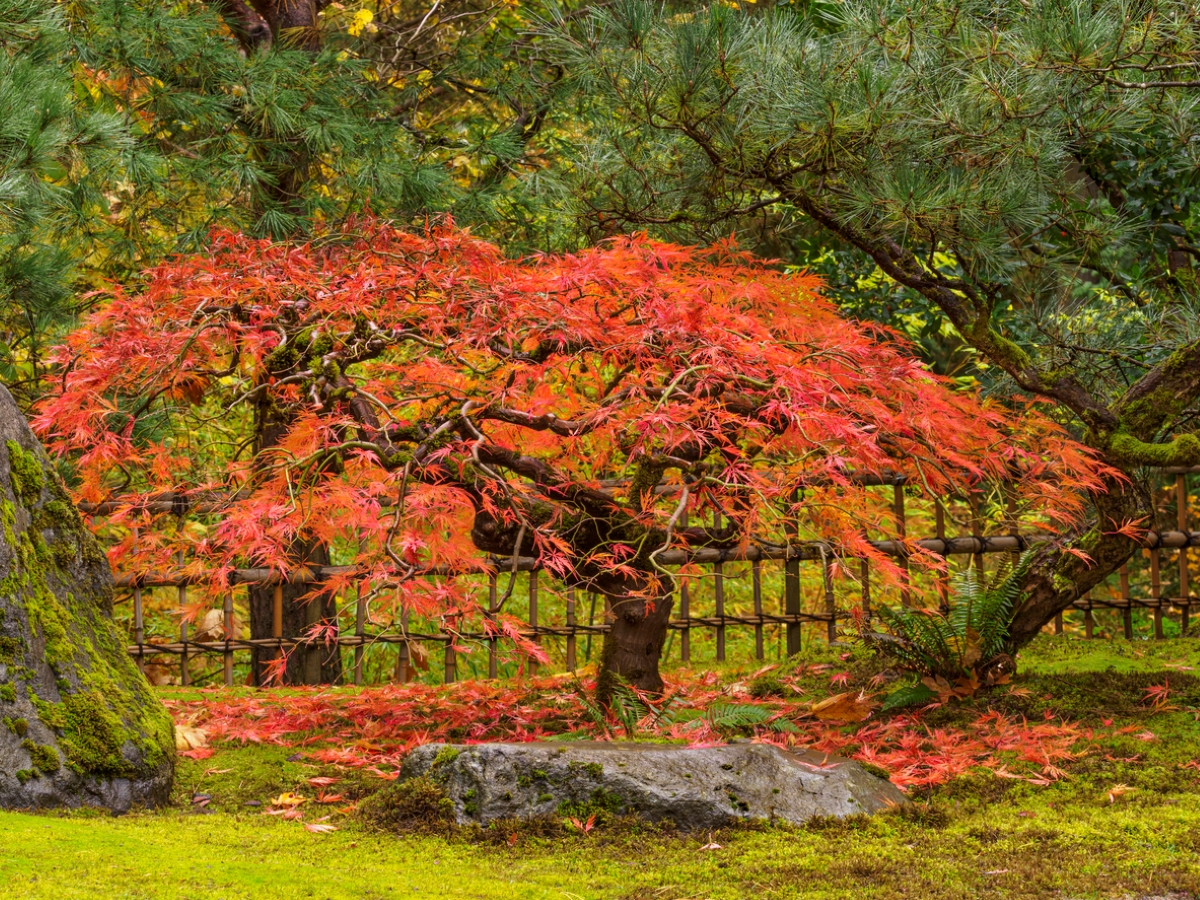
Should you select a red torii gate as a Zen garden focal point, a Japanese maple tree with brilliant crimson leaves will provide balance. If your space is largely green and gray, on the other hand, a Japanese maple tree can make for a much-desired pop of color. But these stunning trees don’t just come in shades of red: They can be orange, yellow, burgundy, plum, green, blue-green, and even pink. Whichever hue you choose, the small, compact tree should be relatively easy to grow. Some varieties, in fact, are so diminutive that they can thrive as bonsai or when grown in containers. These might be good solutions if your climate isn’t conducive to Japanese maples’ needs, or if your garden itself is on the tiny side.
